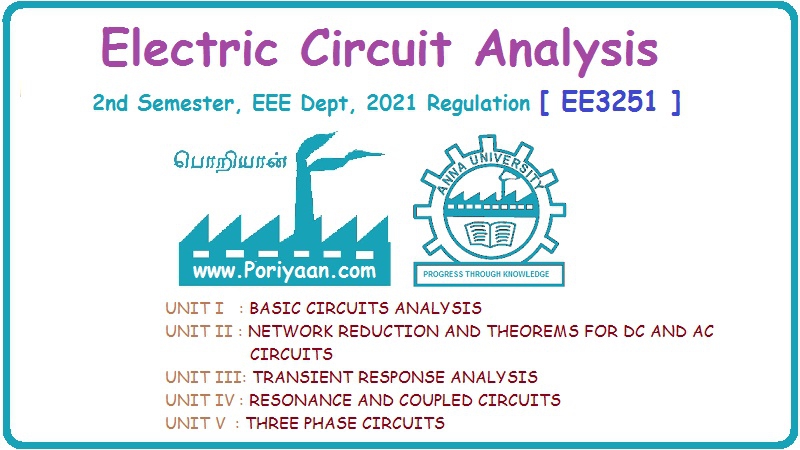Electric Circuit Analysis: Unit I: b. Basic circuits analysis
Exercise
Basic circuits analysis | Electric Circuit Analysis
Electric Circuit Analysis: Unit I: Basic circuits analysis : Exercise
EXERCISE
1.
A resistor carries two alternative currents having same frequency and phase and
having the same peak value of 20 A. One is sinusoidal and the other is
rectangular in wave form. Find the rms value of the resultant current.
[Ans:
24.5 A]
Calculate
the average value and effective value of a periodic current wave having the
following values for equal time intervals over half-cycle, changing suddenly
from one value to the next. 0, 50, 70, 90, 110, 90, 70, 50, 0 and also
calculate form-factor and peak factor. To suley 2M
3.
The applied voltage to an A.C. circuit is v = 200 sin 314 t and the current
flowing is i = 20 sin Isbioauntla a 100 314 t. Find the following:
(a)
Peak values of voltage and current. [Ans:
200 V and 20 A]
(b)
Frequency of the voltage and current [Ans:
50 cps]
(c)
Effective values of voltage and current [Ans: 141.4 V, 14.14 A]]
(d)
The circuit element and its value [Ans: R = 10Ω]
(e)
Power factor and [Ans: p.f. = 1]
(f)
Draw the phasor diagram.
4.
In problem no. 3, the current I = 10 sin (314 t – π/2), the voltage being same.
What is the circuit element? If this element is doubled, what is the rms value
of the current. What is the phase angle?
[Ans
: Inductance, 3.535 A, ϕ = π/2 lag]
5.
In a circuit, having single element i = 4 sin (314 t + π/2) and the
voltage v = 60 sin 314 t.
(a)
Represent voltage and current in polar form.
(b)
Find the phase angle and power factor.
(c)
Identify the circuit element and find its value.
(d) Draw the phasor diagram by taking (i) voltage
as reference, (ii) current as reference.
[Ans: V = 42.42 ∠ 0°, 1 = 2.83 ∠ π/2, ϕ = π/2 lead, p.f. = 0
lead,
Electric Circuit Analysis: Unit I: b. Basic circuits analysis : Tag: : Basic circuits analysis | Electric Circuit Analysis - Exercise
Related Topics
Related Subjects
Electric Circuit Analysis
EE3251 2nd Semester 2021 Regulation | 2nd Semester EEE Dept 2021 Regulation
